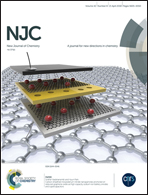Fabrication of polymer capsules by an original multifunctional, active, amphiphilic macromolecule, and its application in preparing PCM microcapsules†
Abstract
A facile, robust, scalable and eco-friendly route as part of a relatively simple system to prepare polymer capsules has always been desired but remains challenging. Herein, a multifunctional, active, amphiphilic macromolecule, 1,1-diphenylethylene (DPE)-capped hydrolyzed poly(glycidyl methacrylate) (D-PGMA), was found to act as both the surfactant and the initiator in an interfacial emulsion polymerization process for polymer capsules. This simplified the emulsion system to only three components: water, monomer and D-PGMA. The interfacial distribution of amphiphilic D-PGMA and the controlled/living radical polymerization owing to the semi-quinoid structure were synergistically responsible for the formation of polymer capsules. Besides, by employing this method, microcapsules encapsulating phase change materials (PCMs) whose encapsulation ratio could be up to 92% were readily fabricated and possessed large heat storage capability and good thermal stability. We believe that this facile, robust, scalable and eco-friendly method will inspire new strategies for preparing polymeric capsules and will find promising application in the field of energy storage.



 Please wait while we load your content...
Please wait while we load your content...